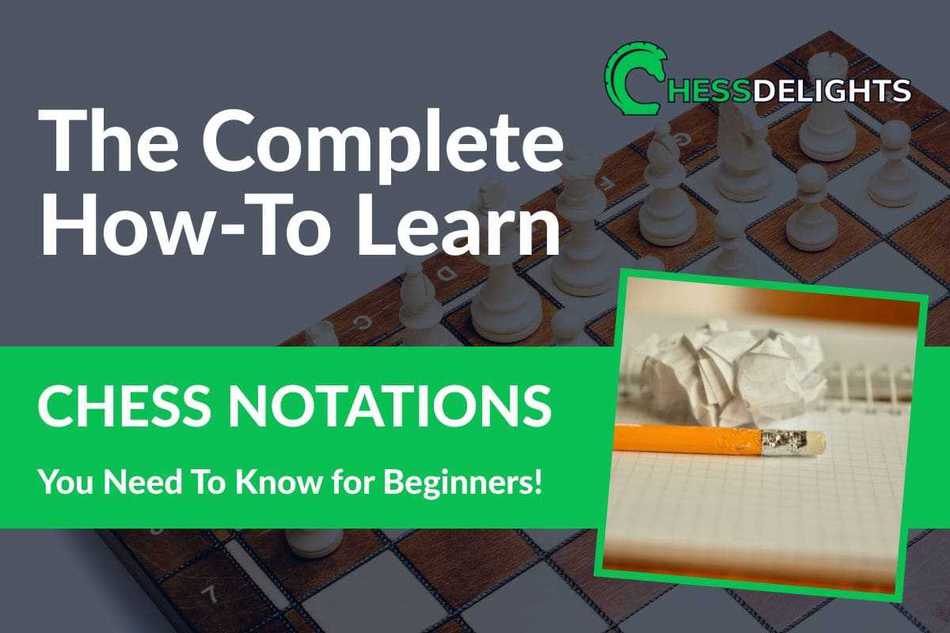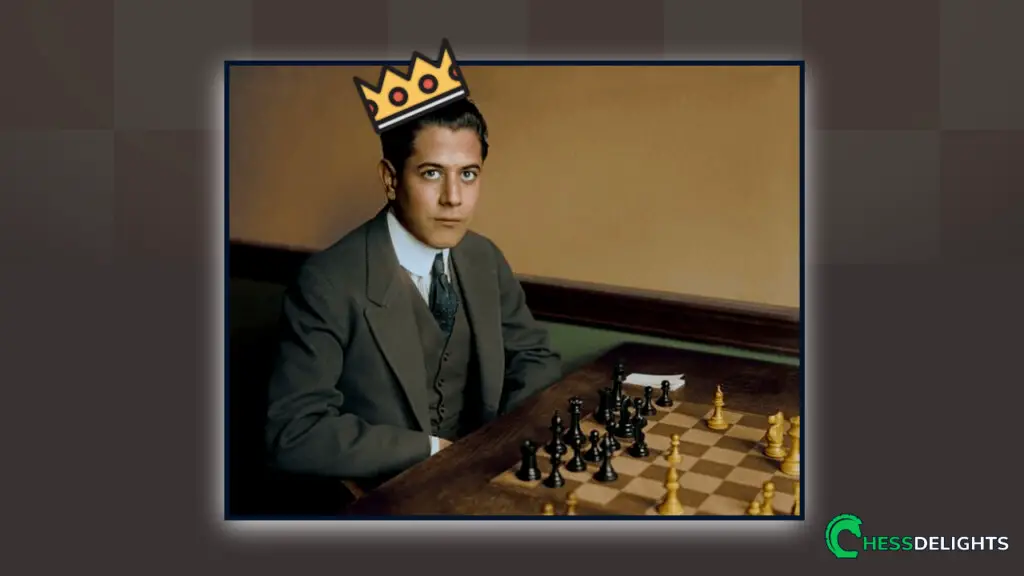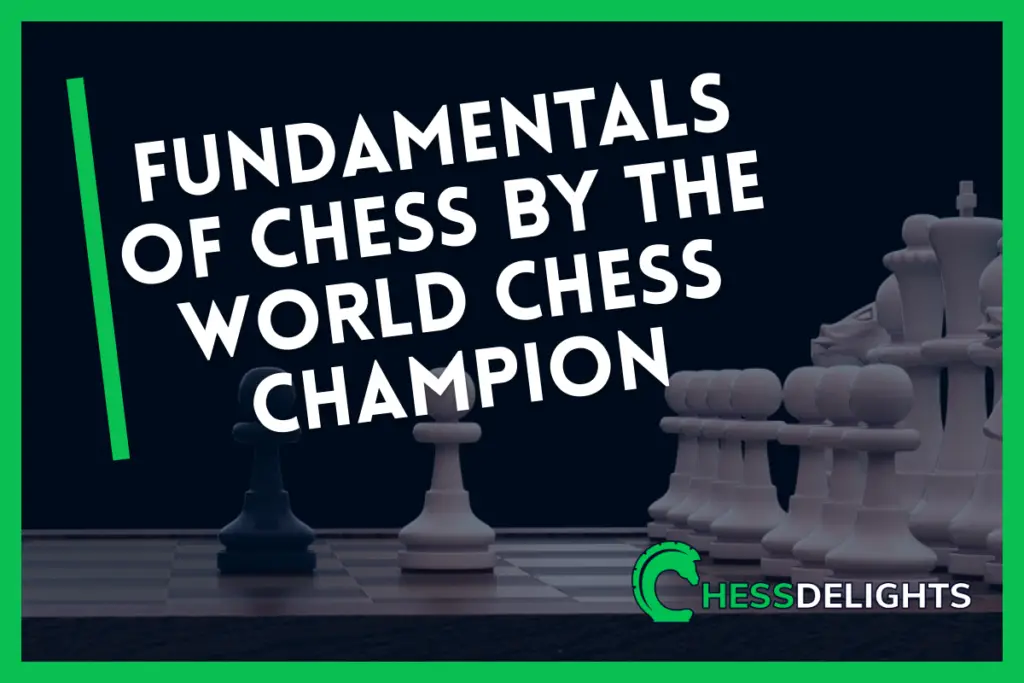Chess notation how do this work in an actual chess tournament? How do we read chess notation from chess books?
When I first started learning chess from my dad I thought I need to know how the sequence of moves (chess openings) is being played on an actual chessboard.
And then I will try to memorize them, but most of the times I need to ask my dad again about the moves or main lines of the Queen's Gambit accepted, etc…
Of course, my dad will show me the moves, but sometimes he is too busy with other activities, and what he suggests is just read some chess book that he has on his table.
The only problem for me that time was the moves are shown in numbers and letters; I did not understand how to read the chess notations. Then my dad did teach me how to read and replay the moves on the actual chessboard.
I was so happy at that time, and I started going through a lot of chess plays in that book.
Chess notation is not that difficult to learn and for those who are looking for a complete guide on how to read chess notation and discover the special symbols used on a chess book, then continue reading below.
Here is an article I made about how to learn and read chess notations.
The complete how-to learn chess notations you need to know for beginners
First, why do we even have chess notations?
A long time ago, chess books were published by authors who explain the moves of a particular game literally with words.
This became a problem for some readers, and they don't have an excellent method to read and follow chess moves that were written on chess books.
So, that is why we have this chess notation that is more convenient and easier for us to replay or keep track of a particular chess game.
Second, what is chess notation exactly?
Chess notation is just a way to read the moves of chess pieces on a chessboard. The most commonly used form of reading chess notation is by using the algebraic notation (yes, it is a mathematical coordinate, but much easier to understand) 🙂
This algebraic notation assigns coordinates of a combination of numbers and letters on a specific square on the chessboard.
So, the numbers and letters are assigned on a raw and files.
The raws were assigned by numbers, and the files were assigned with letters.
Chess Notation Basics: Where do the letters and numbers start on the chessboard?
The letters will always start from left to right when you are playing White and from your right to left if you are playing Black.
With numbers, you only need to remember that the number 1 is going to on the White side, and the number 8 will be on the Black side.
Below is an image of chessboard showing the raws and files assigned with correct numbers and letters on the chessboard:
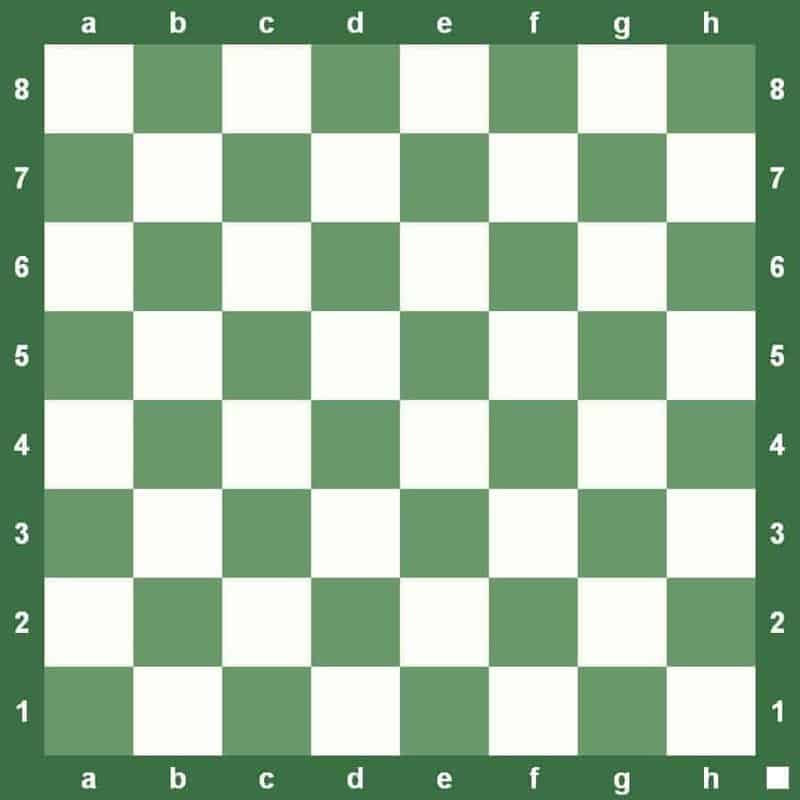
Note: If your chessboard does not have the letters and numbers, follow the image above and write the letters and numbers on your chessboard to be able to follow along with this guide.
Click here to check out my recommended chess set.
Chess Notation: How do you use the letters and numbers to read the squares on a chessboard?
To read the chess notation using the letters and numbers, you need to look at the intersection of both the numbers and letters.
And you start by reading the letter first before a number…
If you draw a line that intersects the letters e and number 4, and you combine the letter and the number that square is now called e4.
Below is an image of a chessboard showing the square e4:
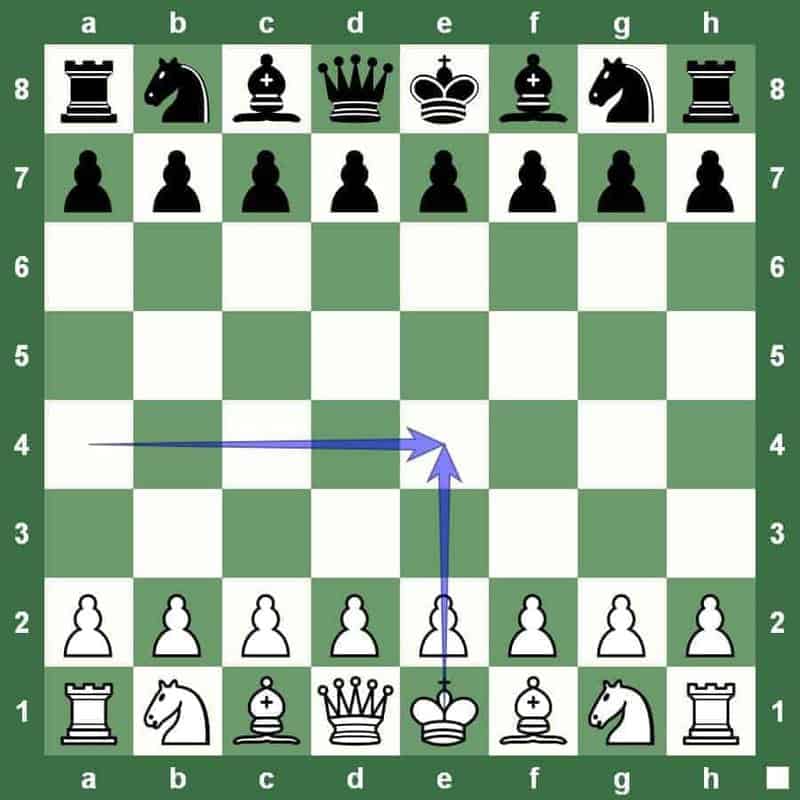
The wrong way to read this is my number first and then letter second, for example, 4e…
Remember to read the bottom letters of the board and then second is the letters on the side of the board.
Now I want you to practice reading the squares of the board, can you name the squares below with the arrow pointing towards it?
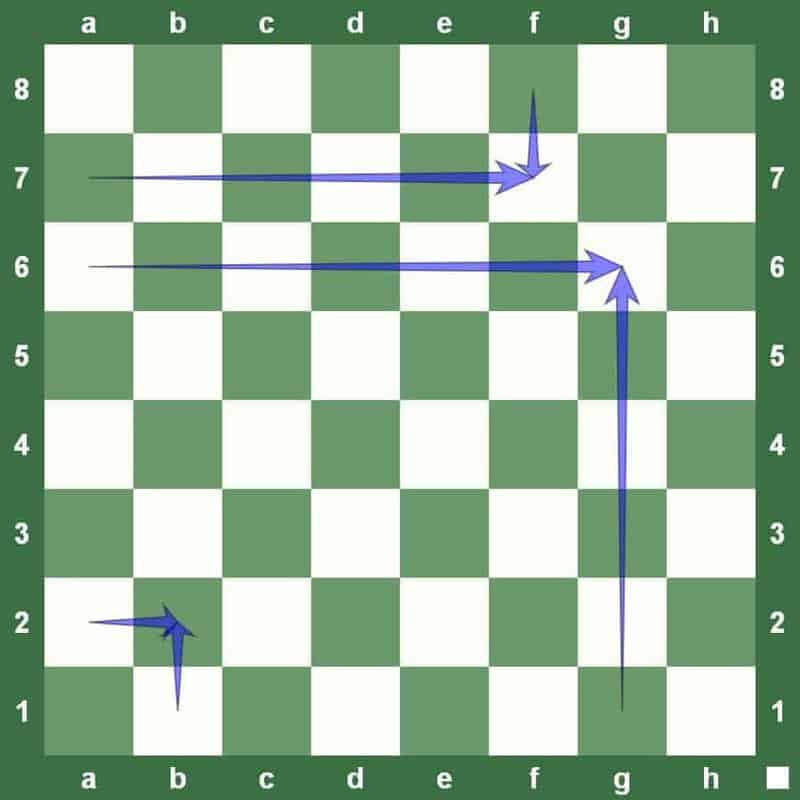
I hope you were able to get the right answer for this example.
The correct answers are f7,g6, and b2.
What is the right way to write the letters and numbers of the squares of a chessboard?
The correct way to write letters and numbers for the squares of a chessboard is by using small letters and just the usual way to write numbers.
You cannot write E4 on your game, and you cannot interpret this as part of a chessboard.
As you can see in the chessboard, the letters are small, not capital letters.
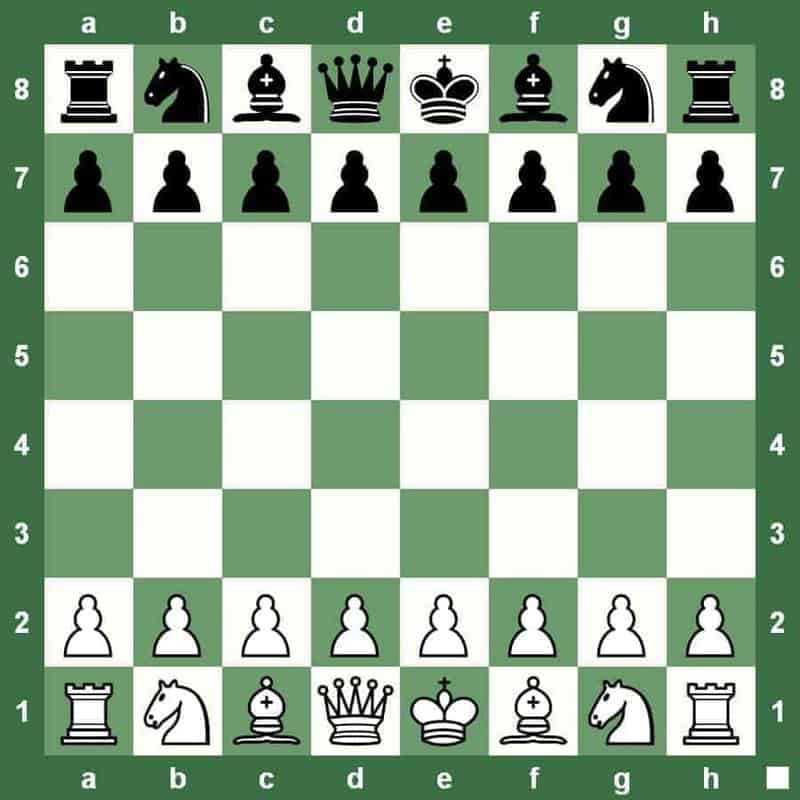
There is a reason for this, and I'm going to explain it to you a little bit later.
Another thing you need to remember is that you cannot write numbers as words, for example, it is wrong to write “efour,” to avoid committing mistakes in writing the chess notation for squares is that you need to look at the exact equivalent numbers and letters on the board.
How do you write chess notation for the chess pieces?
Now that you know how to read and identify the squares on a chessboard.
It is time to learn how to write the chess notation for your chess pieces.
The chess pieces are written with letters as well, the same with files, but the only difference is that the chess pieces letters are written in capital letters.
The chess rules for every chess pieces are designated with letters, and you distinguish the chess pieces by the first letter of the pieces.
But there are two exemptions for this chess rule:
1. Pawn is not identified by its first letter; instead, pawns are determined by the absence of a letter and uses the chess notation of chess board's square. For example, pawns use e4,f7,g6, and b2.
2. Except for the Knight, we use a different letter to identify Knight in a game. So, below are the letters used to identify each chess pieces on the board.
- King is identified with the chess notation letter K
- Queen is identified with the chess notation letter Q
- Rook is recognized with the chess notation letter R
- Bishop is identified with the chess notation letter B, and
- Knight does not use the K, but instead, it is identified with chess notation the letter N
The chess notation for the chess pieces are not difficult to remember, and you only need to keep in mind the two exemption for the Knight and the Pawn.
How to write and read both the chess pieces notation and the destination squares notation together?
Now that you understand the chess notation for squares and got an idea for the chess pieces chess notations…Then it is time to learn how first to write both chess notations together.
When writing chess pieces and squares notation, you need to write the chess piece's letter first and then write down the square that it is occupying or is going to occupy.
For example, Ke2, Qd2, or Ra2… The first letters are the chess pieces, and the following two notations are pertaining to the square of the chessboard.
So, how do you read that?
For Ke2, K is the King's chess notation, and e2 is the square intersection of e file and rank 2. You read that as King e2, King to e2 or King moves to e2.
For Qd2, Q is the Queen's chess notation, and d2 is the square intersection of d file and rank 2. You can read that as Queen d2, Queen to d2, or Queen moves to d2.
And…
For Ra2, R is Rook's chess notation, and a2 is the square intersection of a file and rank 2. You can read that as Rook a2, Rook to a2, or Rook moves to a2.
See the image below for this example:

Now that you know and understand how this works, go ahead and practice answering the image below:
You may also be interested in playing other “chess variants” click the link to find out more about it!
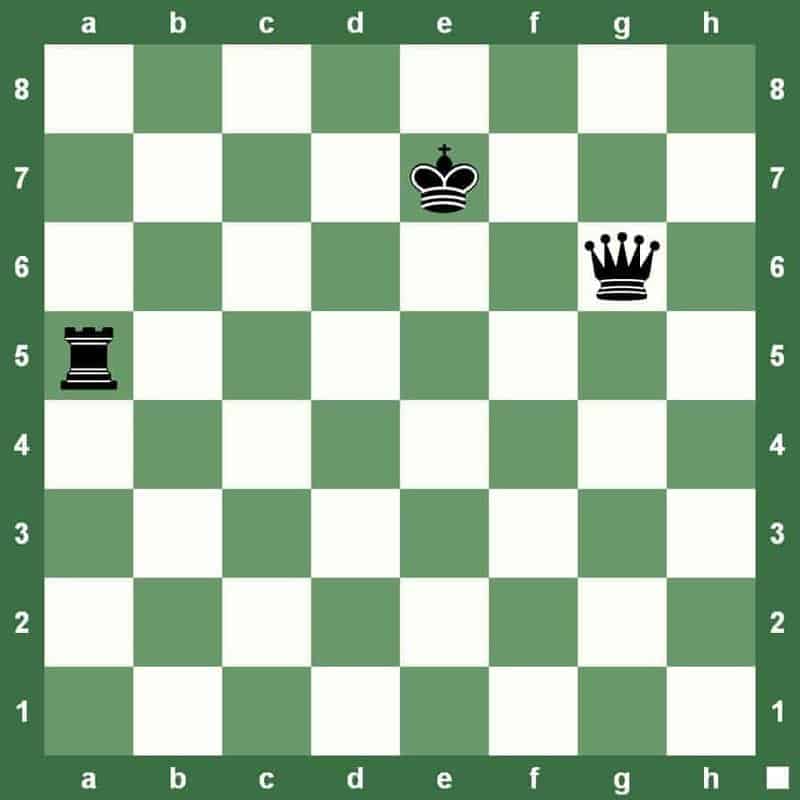
What do the actual moves of each chess player's chess notation would look like?
Ok, so if you are going to grab a chess book you will notice that there are two moves per number, like this, 1. e4 e5 then next is 2. d4 d5, etc…
If for example, the whole duration of the game went on for 30, that would be multiplied by two (2 players) so a total of 60 moves.
Every one equal turns or moves of both players will always be written per number.
And always remember that the first chess notation is always white's move and the second chess notation is the black's move.
How to read common chess symbols for chess notation?
You may have encountered from my other articles that the chess notations are shown as symbols or figures for King, Queen, Rook, Bishop, Pawn, and Knight.
That is still chess notation, but instead of letters, you can identify the chess pieces by its figure or symbols.
And you read it the same way as to how I've explained on how to understand both the chess pieces notation and the square notation.
To give you an idea, see below image of the most common chess symbols used for chess pieces.
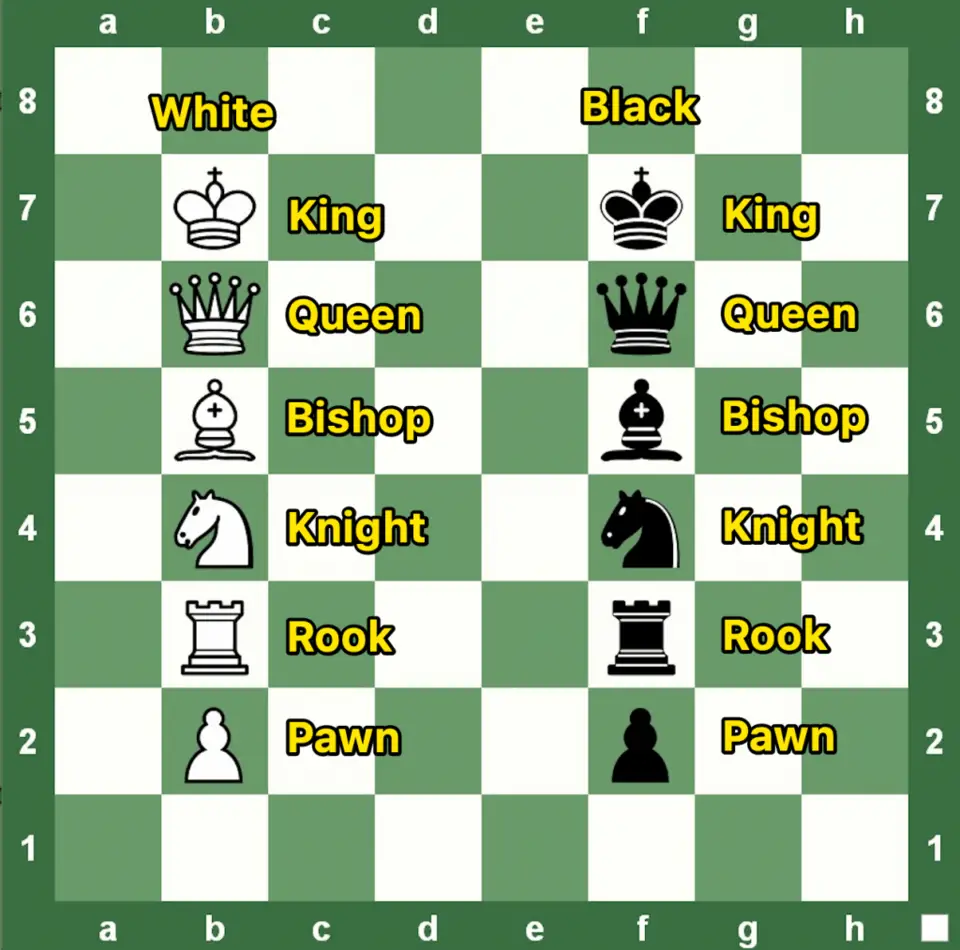
You may say that this is a lot easier to read from a chess book, you are right…
But other chess books uses the letters, not symbols when notating chess games.
How to write chess notation for capturing chess pieces?
This time you would like to learn how to write chess notation for capturing chess pieces…
The universal chess symbol for captured or capturing chess pieces is the symbol “x”…
So, if you want your King to capture a chess piece like a Knight and write it down on a chess notation sheet, you would write the symbol “x” in between the pawn and the Knight and then indicating the destination square.
For example, King captures Knight on e5, and this will be the chess notation KxNe5…
See chess the chess image below for this example:
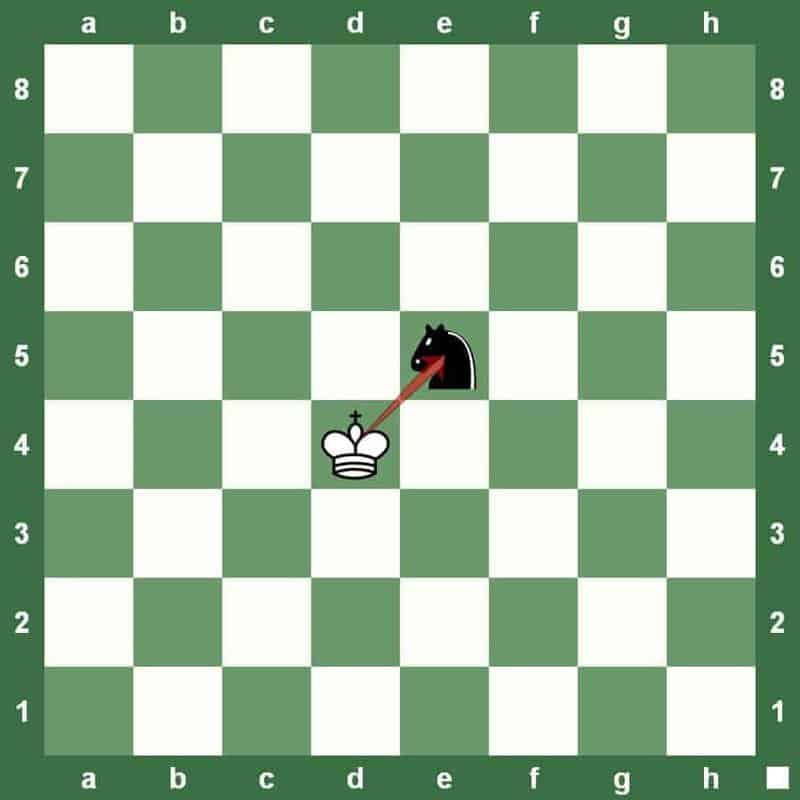
Another example is if you want your pawn to capture another pawn.
In the image below, pawn on d4 will capture the pawn on e5. You are going to write that as dxe5.

For your simple practice, write down the chess notation for the below image:
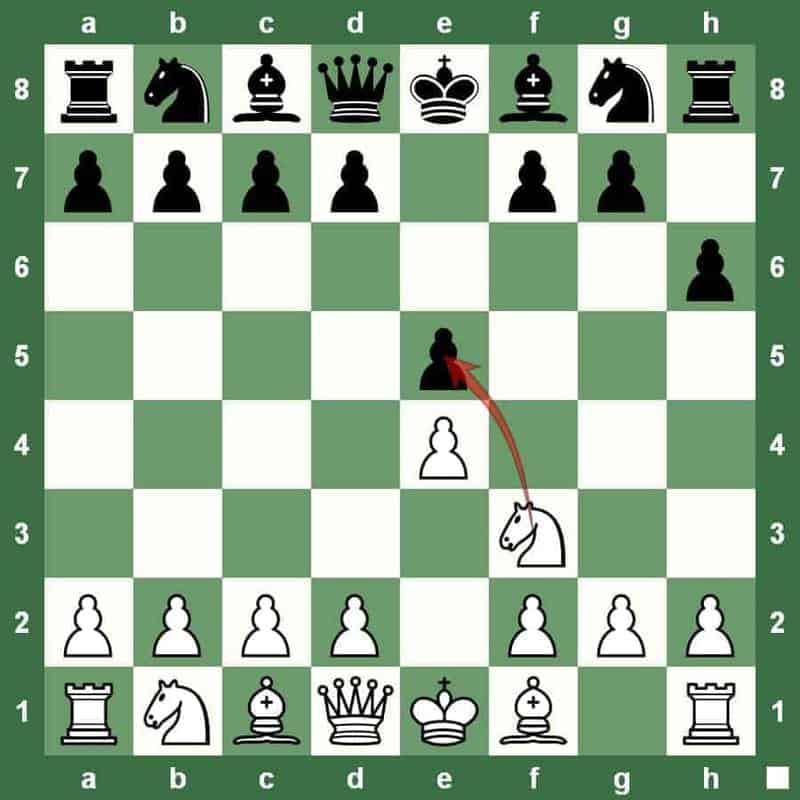
How do you write chess notation for a move that two same types of chess pieces can occupy?
As you know now that chess pieces and their chess notation or chess symbol can sometimes identify two same types of chess pieces.
There are two Rooks, two Bishops, and two Knights for each side…confusion will come for a new chess player on how do you identify which minor chess piece should move on a specific square or capture a chess piece.
The answer is by writing the letter or file that the chess piece is located, and then adding the destination square of the chess piece.
If for example, you have two Rooks that can both occupy a square, what you need to do is add the letter of the file of the Rook that you want to move on that particular destination square.
See image below for this example:
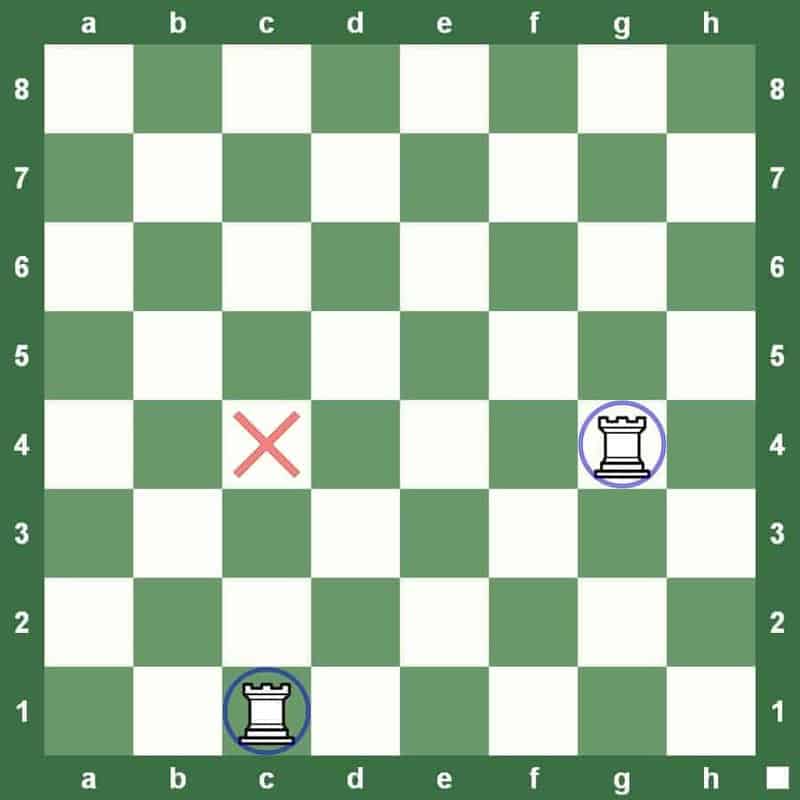
If you want the Rook on c file to occupy the c4 square, then your chess notation is going to be Rcc4, if you read this chess notation that would be Rook c to c4.
If you want the other Rook on g file to occupy the c4 square, then you are going to write this as Rgc4, that means Rook from g moves to c4.
Now that you know how to write chess notation for two same types of chess pieces, I have another simple practice for you.
Write down the chess notation for both of this Knight going to the same destination square:
See chess image below for this example:

I hope you got it right if you still have some clarification you can read the example above one more time.
How to write special chess moves as a chess notation?
I think right now you are already exploring some other types of moves, especially chess moves that you are asking how to write as chess notation. Ok, I am going to list down special moves that we are going to learn how to turn into a chess notation:
- Chess notation for kingside castling
- Chess notation for queenside castling
- Chess notation for pawn promotion
- Chess notation en passant
- Chess notation for check
- Chess notation for checkmate
Those are six special moves that we are going to turn into a chess notation:
Chess notation for kingside castling
We all know that King can castle on either the queenside or the kingside given that there is no obstruction between the King and the Rook, and it is legal to do so…
If you want to indicate that you have castled on the kingside, you need to write “O-O” on your notation sheet…
And, if you are following a chess move from a book, then you now know that if you see this chess notation “O-O,” you understand that the chess player castled on the Kingside.
Note: For castling whether kingside or queenside, the “O” is not a numerical number it is the capital letter O.
Chess notation for queenside castling
The same thing with castling on the queenside, it is legal to do so as long as there is no obstruction between the King and Rook.
The chess notation for castling on the queenside is “O-O-O”.
Seeing this in a chess book, and trying to replay the move on your chessboard, this means you have to castle on the queenside.
Chess notation for pawn promotion
If you have your pawn ready to get promoted on the opposite of the board, you need to write the correct chess notation for this special move.
I have seen two ways this is being written in a chess book, one way is by writing the chess piece at the end of the pawn, and the other way is writing equal sign after the pawn.
Some chess experts discourage the use of the equal sign for pawn promotion, and I do suggest you follow the first way, which is the most common method I have seen in portraying pawn promotion.
To give you an example, promoting a pawn on d8 to Queen will look like this d8Q.
Chess notation en passant
You can identify an en passant move in a chess book by seeing this notation “e.p.”…
If you are not familiar with en passant it is a special move by pawn, wherein it can capture a pawn who advances two moves from its starting square, it is the same as if the pawn moved one square and an enemy pawn can capture it.
When you are going to write en passant move, you need to write it at last, for example, “exd6e.p.”…
You include writing the destination square of the pawn always, then the e.p. for en passant move.
Chess notation for check
For beginners, you may encounter this chess move a lot in a chess book and knowing what chess notation to see or use when this happens is essential.
When you see the notation “+” on a book or a chess notation sheet, that only means that the chess piece is checking the King.
The way you write it or see it on books is that it will be at the end, here is an example of a check using chess notation… Re7+, the notation + is added to the chess piece that checked the King.
Chess notation for checkmate
When a chess game is over, and you were able to checkmate your opponent, you will need to use another chess notation to signify that your opponent's King is checkmated.
To show this in a chess notation sheet or see it in a chess book is that you will use “#” as a chess notation or even “++” can be used for checkmate notation.
You are going to write it the same way as for pawn promotion, en passant, and check move… It has to be placed on the end of the move, like this example, Q6# or Q6++.
When I go through a chess book, and I am looking for a chess game that has a checkmate ending, I browse and look for this notation “#” or “++”… 🙂
Other special chess notation and symbols meaning in the game of chess
Now, other chess notations can be added in a chess game. Usually, this notation is being used by chess analysts.
But, very useful if you are going through some chess games that you want to interpret if that particular move is excellent or a terrible move.
Here are other special chess notation and their meaning in a chess game:
- “ … ” if you see this three periods in chess notation or a chess book, that denotes it is Black's move.
- “!” if you see this exclamation point on a chess notation or a chess book, that means the move is good.
- “!!” and if you see two exclamation point that means that move is more than good or it is an excellent move.
- “?” if you see a question mark after a chess move on a notation, that means the move is not good at all, it is a bad move or a poor move by the chess player.
- “??” now a double question mark on a chess notation is not a good sign, this means that the move is really bad, and it is a blunder move for the chess player.
- “!?” if you see a combination of an exclamation point first and then a question mark, that could mean that the move is good or interesting but not the best move on that part of the game.
- “?!” now, if you see another combination of exclamation and question mark wherein the question mark is first then followed by an exclamation point, then that is considered a dubious move but not easily disprove.
- “TN” or Theoretical Novelty, when seen in chess notation, means that the move has never been played before in that specific chess opening.
- “=” when you see this symbol this could mean that a chess player has offered a draw during the game, or what other chess experts say that it involves an equal opportunity or chances for both the chess players.
- “+=” if you find this notation on a chess game then it only means that the White is just a little bit better than black.
- “=+” for this one the equal sign is written first then after the plus sign means that Black is a little bit better or slightly better than the white player.
- “+-” now, if you see a plus sign and a minus sign or a hyphen, plus symbol is written first before the minus sign, then it means that White is really better or much better than its Black opponent.
- “−+” when you see that minus sign comes first then the plus sign then you can say that or know that Black has an advantage over the White chess player.
- “∞” if you have encountered this infinity symbol or notation on a chess book, this means that in the current game of chess there is no clear advantage whether White is winning or Black is winning.
- “=/∞” if you see this symbol where an equal sign and an infinity sign are together this means that whoever is down on material has a compensation material, basically a player who can still dictate the game or control the game even if that player is down on material.
- “1:0” if you see this at the end of chess game this means that White has won the game either by checkmate or resignation by Black.
- “0:1” Now if you see the reverse, where 0 comes first, then it means that the Black has won the game by checkmate or by the resignation of White.
This notation or chess symbols are always written after a notation move, here is an example for a brilliant move, Qe5!, and another example for blunder move will look like this, Qe6??
Remember, that this chess notation or symbols are the analysis of the game, you may encounter some of these chess moves on your chess book.
I recommend you read and learn more about “chess names and chess moves” just click the link!
Wrapping Up
Learning how to read and write chess notation is a valuable skill for chess players, especially for beginners.
You can now grab a chess book with all of the best chess games that have been notated, and you can now follow the game by yourself or with your chess coach or with your family and friends.
This is one of the essential skills a beginner chess player should develop and practice during a game or if you are simulating previous games.
As you can see, this skill is not that difficult to learn, and you need to give at least 10 minutes or less to read this article, and then you can practice writing or analyzing chess games with chess notations immediately.
I do hope this article has given you some useful insights about learning how chess notation works if you do have any comments or ideas you want to share, leave your comment below.
Have fun going through some old chess books and interpret some chess notation! Enjoy! 🙂
Do check out ChessDelights chess recommendations here.

